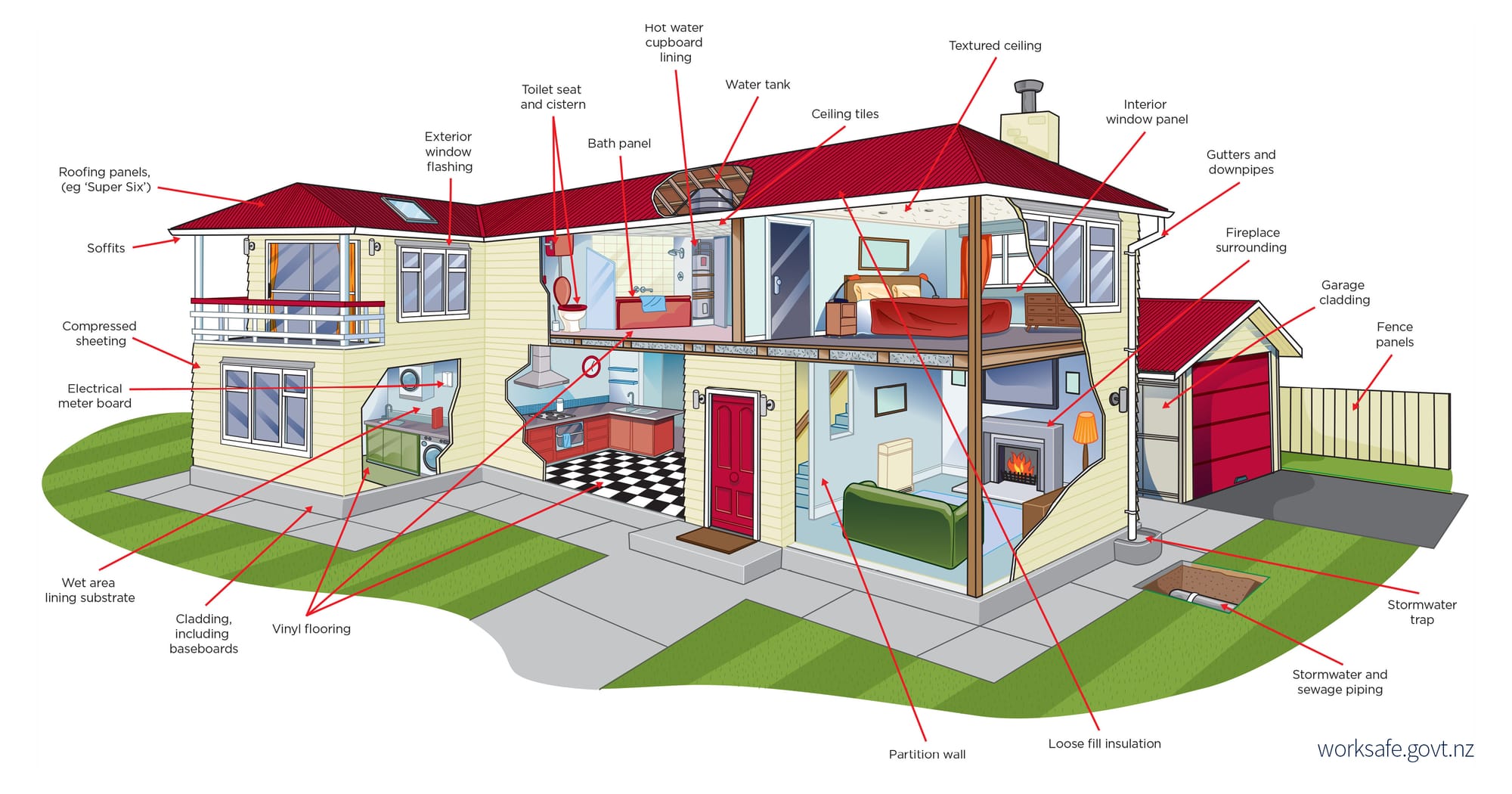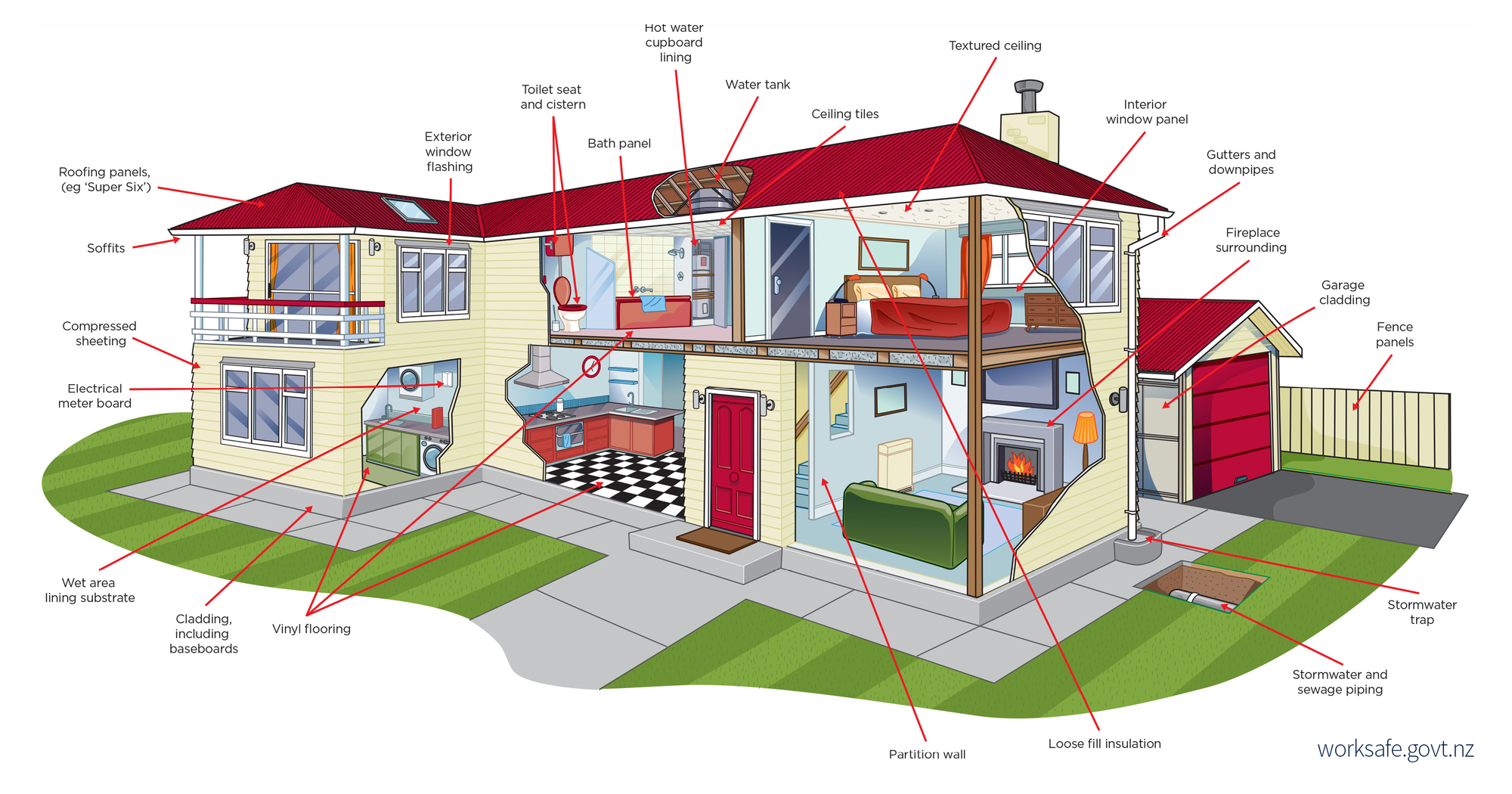Asbestos in rentals: why waiting to test can put people at risk


Asbestos is a harmful material that was commonly used in buildings before the year 2000. If asbestos is disturbed during repairs or renovations, it can release tiny fibres into the air that are dangerous to breathe. These fibres can cause serious health problems, such as lung cancer and other illnesses, many years after someone is exposed. This is why it is important to know if asbestos is present in a rental property and to manage it safely. Taking action early helps protect tenants, workers, and anyone else who might be affected.
Any property built before 2000 in New Zealand should be treated as potentially containing asbestos-containing materials (ACM). The risk is highest for properties built:
• Before the mid-1980s – very high likelihood of ACM in multiple areas, including ceilings, walls, flooring, soffits, and cladding.
• Mid-1980s to 1990s – lower use but still common in certain products, particularly in cement sheet, vinyl flooring, and textured ceilings.
• 1990–2000 – asbestos use was being phased out but some imported products still contained it until the full ban in 2016.
Under the Health and Safety at Work (Asbestos) Regulations 2016, a PCBU (Person Conducting a Business or Undertaking), including landlords and property managers, must identify asbestos before any work that could disturb it is carried out.
There are two approaches:
1. Reactive testing – This is when you arrange asbestos testing only once you've decided to carry out work that could disturb materials, such as replacing a bathroom wall lining or removing old vinyl. While this might sound sensible, it has a critical flaw: we don't always know when work will be needed. A sudden leak behind a shower, roof storm damage, or urgent electrical repairs can force trades on site immediately. If ACM is present and unidentified, there's a real risk of exposing tenants, contractors, and even property managers to airborne fibres.
2. Proactive testing – This involves surveying and documenting ACM before it becomes an issue. An asbestos management survey identifies and records where asbestos is located and its current conditions, so when urgent repairs or planned renovations happen, the information is already on file. This ensures fast, safe, and compliant decision-making.
Why proactive is safer:
• Eliminates the delay of emergency testing during urgent repairs
• Reduces the likelihood of accidental asbestos disturbance
• Meets the duty to manage asbestos risks before work begins
• Provides clear information for all trades and contractors, reducing uncertainty and cost.
Proactive testing is not just about ticking a compliance box.
It's about protecting people from a proven health hazard. Asbestos-related diseases such as mesothelioma, asbestosis, and lung cancer can occur decades after exposure, and there is no safe level of inhalation.
Our message is clear: If your property was built before 2000, don't wait until you have a problem. Identify and record ACM now. The cost is small compared to the risk of uncontrolled exposure and the potential enforcement action if you are found non-compliant.
Speak to your Harcourts Property Manager today. They can connect you with trusted, qualified asbestos surveyors who will provide accurate testing, clear reports, and the right management advice — helping you meet your legal obligations and keep everyone safe.